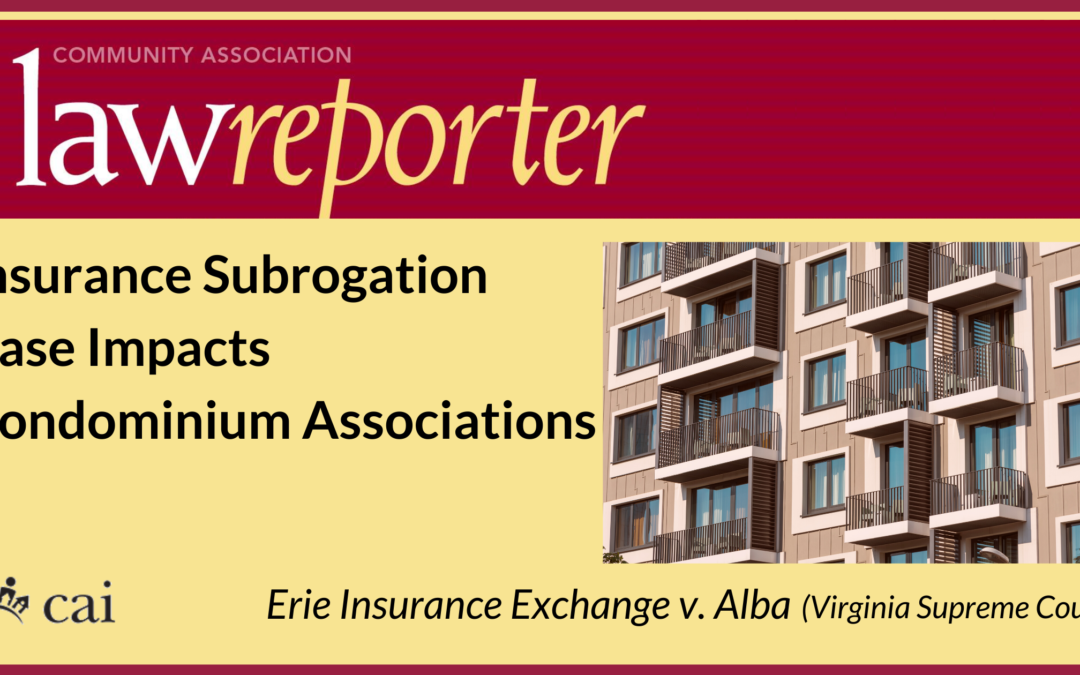Community Association Law Reporter is a valuable CAI member benefit that provides a monthly summary of important legal cases impacting community associations. To spread the word about this resource, I will be highlighting a case once a month to offer greater insight for all our subscribers.
In May, the Supreme Court of Virginia ruled that an insurer did not waive its subrogation rights (the process by which an insurance company collects money from the party at fault) against tenants of a unit owner in a condominium insurance policy. The insurance company can pursue a claim for damages against the tenant even though it had waived the same claim against the owner.
The association in this case (Erie Insurance Exchange v. Alba) purchased an insurance policy to cover the condominium property. A unit owner in the condominium leased the unit to a tenant who negligently began a fire that caused extensive damage to the unit and other portions of the condominium. The association filed a lawsuit against the tenant to recover the amounts paid by the association outside of the insurance policy deductible alleging the tenant was responsible for the fire and liable for damage under the condominium documents.
The tenant argued the condominium’s insurance policy did not provide the right to pursue subrogation claims against tenants, and that she was not obligated to pay the amounts paid by the association. The Supreme Court of Virginia affirmed the appeals court ruling, finding that the condominium documents and insurance policy reflected the association’s expectation of maintaining a tenant’s accountability. This ruling aligns with CAI’s public policy on risk management and insurance.
Adopting a comprehensive risk management policy that includes the purchase of comprehensive insurance is vital if a community association is to minimize the adverse consequences of accidental loss, maintain the continuity of the association as a business organization, and assist homeowner members in protecting their most important asset—their homes.
CAI believes that a comprehensive association insurance program must focus on meeting a broad range of legal and lender requirements while recognizing that the governing board is the trustee of the owners in insurance matters. This program (collectively, risk management and insurance) requires that risks of loss be fully evaluated and that funding for such loss be completely analyzed. Learn more about CAI’s risk management and insurance public policy.
This case was highlighted in the July issue of CAI’s Community Association Law Reporter. CAI members can log in to view the full case summary. At least one case per issue is made available to the public.
In addition to Law Reporter, the College of Community Association Lawyers (CCAL) and Community Insurance and Risk Management Specialists (CIRMS) prepare a case law update annually. This case law database contains dozens of risk management and insurance intensive case summaries, along with their references, case numbers, and dates.



